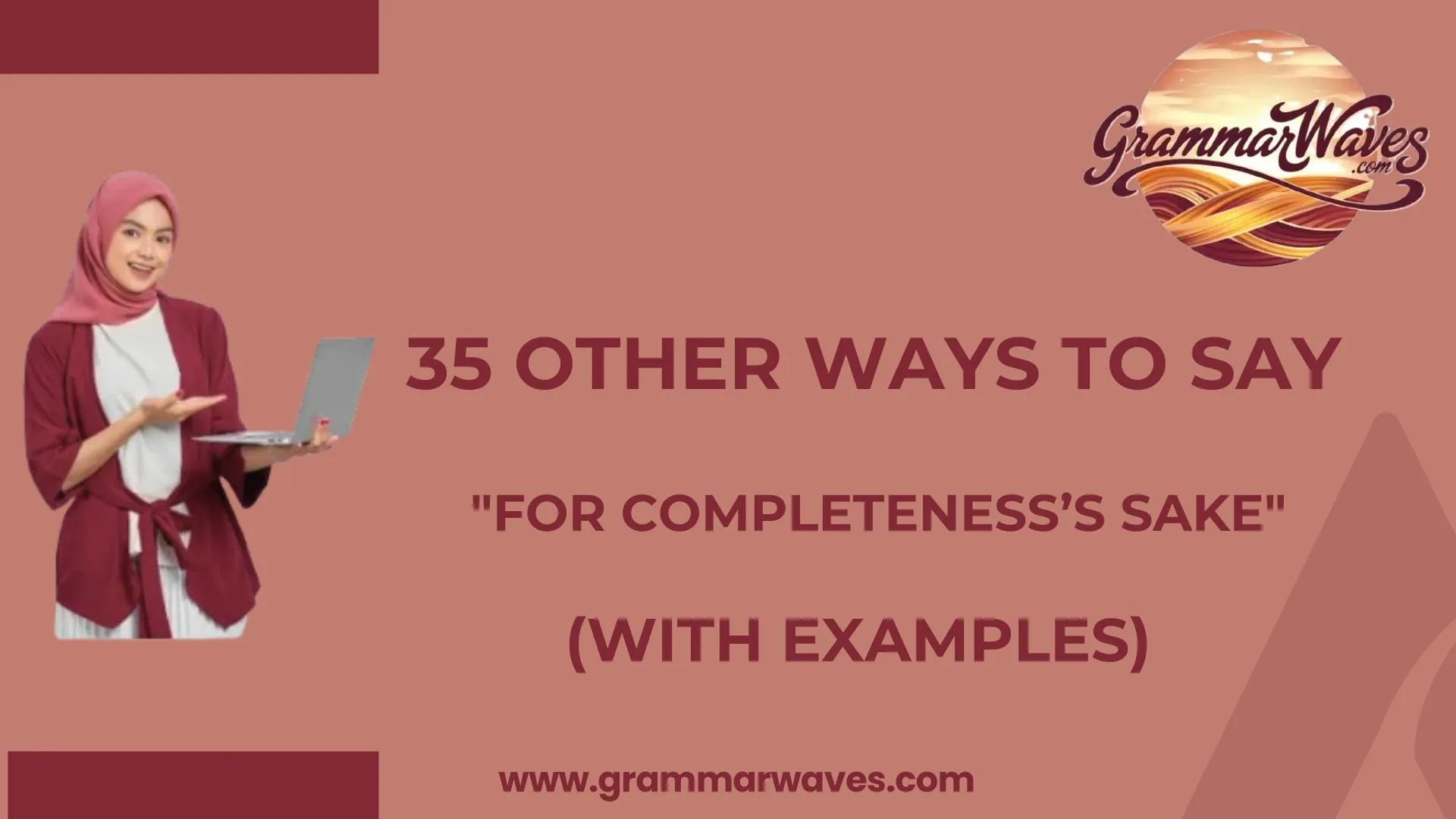When finding the right words to show care and concern, saying “I hope you feel better” is a kind gesture that can make a huge difference. Exploring alternatives allows you to communicate empathy in ways that feel more personal, warm, and meaningful. Whether writing a message to a friend, colleague, or loved one, thoughtful phrases help your words resonate with genuine compassion and support.
Using deliberate words can strengthen connections and make your messages truly personal. Alternatives not only express care but also show sincerity, turning a simple saying into a heartfelt gesture that leaves a lasting impression. With 35 carefully chosen options, you can help others feel valued, supported, and understood.
Finding the right words to show care and concern can make a huge difference. Saying “I hope you feel better” is kind, but exploring alternatives allows you to communicate your empathy in ways that feel more personal, warm, and meaningful. Whether you’re writing a message to a friend, colleague, or loved one, these alternatives help your words resonate with genuine compassion and support.
What Does “I Hope You Feel Better” Mean?
The phrase “I hope you feel better” expresses concern for someone’s well-being, wishing them recovery from illness, stress, or emotional hardship. It conveys empathy, care, and a positive intention to see the person return to a happier or healthier state.
When to Use “I Hope You Feel Better”
You can use this phrase:
- When someone is physically unwell or recovering from illness
- When a friend or family member is experiencing stress, sadness, or emotional challenges
- In casual messages, emails, or conversations where showing care is appropriate
Is It Professional/Polite to Say “I Hope You Feel Better”?
Yes! It’s polite, empathetic, and widely accepted in both personal and professional contexts. Professional alternatives can add subtlety or warmth, depending on the situation.
Pros and Cons
Pros:
- Simple, clear, and universally understood
- Expresses empathy and care
- Can be used in casual, friendly, or professional contexts
Cons:
- Can sound generic if overused
- May lack emotional depth in serious situations
- Alternatives may feel more thoughtful or personalized
I Hope You Feel Better Synonyms:
- Wishing You a Speedy Recovery
- Get Well Soon
- Hoping You Feel Better Soon
- Sending You Healing Thoughts
- Wishing You Strength and Health
- Take Care of Yourself
- Thinking of You
- Sending Positive Vibes
- Hoping for Your Quick Recovery
- Wishing You Comfort and Health
- Praying for Your Health
- Sending You Warm Wishes
- Hope You’re Back on Your Feet Soon
- Take It Easy and Heal
- Wishing You a Full Recovery
- Here’s to a Fast Recovery
- Hope You Feel Stronger Each Day
- Thinking Good Thoughts for You
- Sending Healing Energy
- Wishing You Comfort and Ease
- May You Feel Better Soon
- Hope Your Day Gets Better
- Wishing You Wellness
- Take Good Care of Yourself
- Here’s Hoping You Feel Better Soon
- Hoping for a Smooth Recovery
- Wishing You Bright Days Ahead
- Sending You Care and Love
- Hoping You Bounce Back Quickly
- Wishing You a Speedy Healing
- Thinking of You and Your Recovery
- Hope You’re Feeling Stronger
- Wishing You Peace and Health
- Hope You’re Back to Your Best Soon
- Sending Love and Well Wishes
Wishing You a Speedy Recovery
Meaning:
Expressing hope that someone recovers quickly from illness or hardship.
Explanation:
This phrase emphasizes timeliness and health restoration.
Example:
Wishing you a speedy recovery after your surgery. Take care!”
Best Use:
Formal or professional emails, get-well messages
Worst Use:
Informal contexts may sound overly stiff.
Tone:
Polite, supportive, professional
Get Well Soon
Meaning:
A classic and direct way to wish someone better health.
Explanation:
Conveys care simply and warmly.
Example:
I heard you’re not feeling well. Get well soon!”
Best Use:
Casual or friendly messages
Worst Use:
May be too informal for professional contexts
Tone:
Friendly, caring, concise
Hoping You Feel Better Soon
Meaning:
Expresses hope for someone’s quick improvement.
Explanation:
Slightly longer and warmer than “Get well soon,” it conveys genuine empathy.
Example:
“Hoping you feel better soon and can enjoy your weekend.”
Best Use:
Friendly emails, texts, or cards
Worst Use:
May feel repetitive in frequent messaging
Tone:
Warm, empathetic, caring
Sending You Healing Thoughts
Meaning:
Conveys spiritual or emotional support for recovery.
Explanation:
Implies care beyond physical health, touching on emotional or mental well-being.
Example:
Sending you healing thoughts during this challenging time.”
Best Use:
Emotional support, serious illness, reflective messages
Worst Use:
Casual conversation; may feel too serious for minor ailments
Tone:
Thoughtful, compassionate, reflective
Wishing You Strength and Health
Meaning:
Combines wishes for physical recovery and personal resilience.
Explanation:
Expresses empathy with encouragement and positivity.
Example:
Wishing you strength and health as you recover from your illness.”
Best Use:
Supportive notes, professional messages, and serious illness
Worst Use:
Minor or temporary issues where the tone may feel heavy
Tone:
Encouraging, warm, professional
Take Care of Yourself
Meaning:
Encourages someone to prioritize their health and well-being.
Explanation:
Gentle and caring, often used as part of a get-well message.
Example:
“Take care of yourself and rest as much as you need.”
Best Use:
Friendly, caring texts or emails
Worst Use:
May feel vague without context
Tone:
Supportive, empathetic, casual
Thinking of You
Meaning:
Indicates someone is in your thoughts and provides emotional support.
Explanation:
It can accompany a hope for recovery or emotional healing.
Example:
“Thinking of you and hoping you feel better soon.”
Best Use:
Emotional or serious situations, cards, and personal messages
Worst Use:
It may be too subtle for urgent health situations
Tone:
Thoughtful, warm, caring
Sending Positive Vibes
Meaning:
Offers optimism and support for recovery.
Explanation:
Modern, friendly way to encourage emotional upliftment.
Example:
Sending positive vibes your way. Hope you feel better soon!”
Best Use:
Casual texts, social media messages
Worst Use:
Serious or professional contexts
Tone:
Friendly, upbeat, supportive
Hoping for Your Quick Recovery
Meaning:
Expresses desire for someone to return to health soon.
Explanation:
The formal version of “Get well soon” emphasizes urgency and care.
Example:
“Hoping for your quick recovery and a smooth return to work.”
Best Use:
Professional emails, formal cards
Worst Use:
Casual conversation may feel stiff.
T.one:
Polite, professional, caring
Wishing You Comfort and Health
Meaning:
Offers emotional ease and physical recovery.
Explanation:
Balances care for mind and body, showing thoughtful support.
Example:
“Wishing you comfort and health during your recovery.”
Best Use:
Serious illness, reflective messages, professional emails
Worst Use:
Minor health issues where tone may feel heavy
Tone:
Empathetic, thoughtful, caring
Praying for Your Health
Meaning:
Offering spiritual support and hope for recovery.
Explanation:
Indicates you are keeping the person in your prayers and wishing them wellness.
Example:
Praying for your health and a smooth recovery from surgery.”
Best Use:
Religious or spiritual contexts, serious illness
Worst Use:
Casual or non-religious situations
Tone:
Compassionate, thoughtful, spiritual
Sending You Warm Wishes
Meaning:
Expressing care, comfort, and positivity.
Explanation:
A gentle, friendly way to show concern and hope for recovery.
Example:
Sending you warm wishes for a speedy recovery!”
Best Use:
Cards, texts, emails to friends or colleagues
Worst Use:
Too general for serious medical situations
Tone:
Friendly, caring, supportive
Hope You’re Back on Your Feet Soon
Meaning:
Wishing someone a return to normal energy and activity.
Explanation:
Informal, warm encouragement for recovery.
Example:
“Hope you’re back on your feet soon after your cold!”
Best Use:
Casual messages to friends, family, or colleagues
Worst Use:
Formal or professional letters
Tone:
Warm, friendly, encouraging
Take It Easy and Heal
Meaning:
Advising rest and self-care for recovery.
Explanation:
Shows concern for both physical rest and emotional comfort.
Example:
“Take it easy and heal; we’ll catch up once you feel better.”
Best Use:
Casual, friendly, supportive situations
Worst Use:
Professional contexts requiring a formal tone
Tone:
Gentle, caring, casual
Wishing You a Full Recovery
Meaning:
Expressing hope for a complete return to health.
Explanation:
Polite, professional way to show concern.
Example:
Wishing you a full recovery and strength during this time.”
Best Use:
Professional emails, serious illness
Worst Use:
Casual texts to friends may feel formal
Tone:
Thoughtful, professional, warm
Here’s to a Fast Recovery
Meaning:
Wishing for quick healing.
Explanation:
Slightly celebratory, upbeat phrasing for encouragement.
Example:
Here’s to a fast recovery! Can’t wait to see you back at work.”
Best Use:
Friendly or informal messages
Worst Use:
Serious or delicate health situations
Tone:
Optimistic, friendly, encouraging
Hope You Feel Stronger Each Day
Meaning:
Expressing ongoing care and improvement.
Explanation:
Encourages progress and gradual recovery.
Example:
“Hope you feel stronger each day as you rest and recover.”
Best Use:
Empathetic messages to friends, family, or patients
Worst Use:
Brief or casual texts may be too long
Tone:
Thoughtful, gentle, supportive
Thinking Good Thoughts for You
Meaning:
Showing empathy through mental support.
Explanation:
Indicates positive energy and emotional support.
Example:
Thinking good thoughts for you and hoping you feel better soon.”
Best Use:
Cards, texts, supportive emails
Worst Use:
Can feel vague without context
Tone:
Friendly, caring, empathetic
Sending Healing Energy
Meaning:
Expresses well-wishes for recovery in a spiritual or positive energy sense.
Explanation:
Modern and thoughtful way to convey concern.
Example:
Sending healing energy your way-hope you feel better soon!”
Best Use:
Casual, thoughtful messages or spiritual contexts
Worst Use:
Very formal or corporate settings
Tone:
Supportive, positive, empathetic
Wishing You Comfort and Ease
Meaning:
Hopes for emotional and physical relief.
Explanation:
Focuses on well-being beyond just health, including peace and rest.
Example:
“Wishing you comfort and ease as you recover from your illness.”
Best Use:
Serious illness, thoughtful letters
Worst Use:
Minor ailments; may feel too heavy
Tone:
Compassionate, gentle, empathetic
May You Feel Better Soon
Meaning:
Classic, polite way to express hope for recovery.
Explanation:
Slightly more formal than “Get well soon,” it shows genuine concern.
Example:
“May you feel better soon and regain your strength quickly.”
Best Use:
Professional emails, cards, or letters
Worst Use:
Casual text messages may feel stiff.
Tone:
Polite, caring, professional
Hope Your Day Gets Better
Meaning:
Offers support for emotional or minor physical discomfort.
Explanation: It can refer to illness, stress, or a rough day.
Example:
“Hope your day gets better! Take care of yourself.”
Best Use:
Casual messages for friends or colleagues
Worst Use:
Serious health situations; may feel too light
Tone:
Friendly, empathetic, supportive
Wishing You Wellness
Meaning:
A broad wish for physical, mental, and emotional health.
Explanation:
Modern, holistic way to show care.
Example:
“Wishing you wellness as you take time to rest and recover.”
Best Use:
Professional emails, thoughtful notes
Worst Use:
Informal contexts may feel too formal.
Tone:
Polished, caring, professional
Take Good Care of Yourself
Meaning:
Encourages personal self-care and rest.
Explanation:
Gentle reminder to prioritize recovery.
Example:
“Take good care of yourself-hope you’re back to full strength soon.”
Best Use:
Friendly, casual, or empathetic messages
Worst Use:
Short, formal emails may sound informal.
Tone:
Gentle, warm, supportive
Here’s Hoping You Feel Better Soon
Meaning:
Polite and warm expression of hope for recovery.
Explanation:
A slightly longer and more personal version of “Get well soon.”
Example:
“Here’s hoping you feel better soon and can enjoy your week.”
Best Use:
Friendly emails, cards, texts
Worst Use:
Formal professional letters may prefer concise phrasing
Tone:
Friendly, caring, warm
Hoping for a Smooth Recovery
Meaning:
Expresses desire for minimal discomfort and steady healing.
Explanation:
Shows consideration for both physical and emotional aspects.
Example:
“Hoping for a smooth recovery after your procedure.”
Best Use:
Professional, formal, or serious illness contexts
Worst Use:
Minor sickness or casual situations
Tone:
Polite, professional, empathetic
Wishing You Bright Days Ahead
Meaning:
Offers hope for better health and happiness in the future.
Explanation:
Encouraging and positive expression of care.
Example:
“Wishing you bright days ahead as you recover from your illness.”
Best Use:
Reflective messages, emotional support
Worst Use:
Very minor illnesses; may feel dramatic
Tone:
Warm, optimistic, thoughtful
Sending You Care and Love
Meaning:
Emotional and personal expression of support and empathy.
Explanation:
Highlights emotional connection alongside wishes for recovery.
Example:
“Sending you care and love-hope you feel better soon.”
Best Use:
Close friends, family, or emotional support messages
Worst Use:
Professional or formal situations
Tone:
Warm, affectionate, compassionate
Hoping You Bounce Back Quickly
Meaning:
Encourages a fast recovery and return to normalcy.
Explanation:
Slightly informal and cheerful, emphasizing resilience.
Example:
Hoping you bounce back quickly and feel like yourself again!”
Best Use:
Casual texts, emails to friends or colleagues
Worst Use:
Serious illnesses may sound too light.
Tone:
Friendly, upbeat, supportive
Wishing You a Speedy Healing
Meaning:
Focuses on the quick restoration of health.
Explanation:
Formal and positive, emphasizing healing and recovery.
Example:
“Wishing you a speedy healing after your surgery.”
Best Use:
Professional emails, formal cards
Worst Use:
Casual texts may sound stiff.
Tone:
Polite, professional, caring
Thinking of You and Your Recovery
Meaning:
Combines thoughtfulness with care for physical or emotional recovery.
Explanation:
Indicates active concern and mental support.
Example:
“Thinking of you and your recovery-hope each day is easier than the last.”
Best Use:
Cards, reflective messages, personal notes
Worst Use:
Brief texts may be too long.g
Tone:
Warm, caring, empathetic
Hope You’re Feeling Stronger
Meaning:
Encourages improvement in health and vitality.
Explanation:
Focuses on progress and strength regained.
Example:
“Hope you’re feeling stronger today and getting some rest.”
Best Use:
Friendly texts, caring notes, personal messages
Worst Use:
Formal or corporate communication
Tone:
Supportive, optimistic, warm
Wishing You Peace and Health
Meaning:
Combines physical well-being with emotional calm.
Explanation:
A gentle and thoughtful way to offer holistic care.
Example:
“Wishing you peace and health during this recovery period.”
Best Use:
Serious illness, thoughtful letters, professional notes
Worst Use:
Minor sickness; may feel too formal
Tone:
Compassionate, reflective, empathetic
Hope You’re Back to Your Best Soon
Meaning:
Encourages full recovery and return to normal energy and self.
Explanation:
Warm and casual, ideal for friends or colleagues.
Example:
“Hope you’re back to your best soon! We miss you at the office.”
Best Use:
Friendly, informal, professional colleagues in a casual tone
Worst Use:
Serious medical situations require formal language.
Tone:
Friendly, encouraging, warm
Sending Love and Well Wishes
Meaning:
Emotional, supportive expression for overall recovery.
Explanation:
Combines care, warmth, and positivity for health and spirit.
Example:
Sending love and well wishes as you rest and recover.”
Best Use:
Family, close friends, reflective notes
Worst Use:
Formal professional contexts
Tone:
Warm, compassionate, supportive
Final Thoughts
Expressing care and concern through words is one of the most powerful ways to show empathy. While “I hope you feel better” is a kind and simple phrase, using alternatives allows you to convey warmth, thoughtfulness, and personal attention. Choosing the right words can transform a message from routine to meaningful and memorable, making the recipient feel genuinely supported.
The 35 alternatives outlined in this guide range from friendly and casual phrases like “Take it easy and heal” or “Hope you’re back on your feet soon” to more reflective or professional options such as “Wishing you a full recovery” or “Sending you comfort and ease.” Each option has its own tone, context, and best use, allowing you to match your words to the situation, whether it’s a minor illness, emotional stress, or a serious medical recovery.
By using these alternatives thoughtfully, you demonstrate not just concern, but careful attention to how your message is received. Some phrases are uplifting and cheerful, others are gentle and reflective, and some provide spiritual or emotional support. This variety ensures that you can connect with the recipient in a way that feels authentic and empathetic, while also keeping your communication fresh and impactful.
Ultimately, the power of words lies in their ability to comfort, reassure, and encourage. Leveraging these alternatives enhances your ability to communicate compassion, strengthens relationships, and leaves the recipient feeling valued and cared for.
FAQs
What does “I hope you feel better” mean?
It’s a phrase used to express care and empathy, wishing someone a quick recovery from illness, emotional distress, or discomfort. It conveys concern and support, making the recipient feel valued and reassured.
Can I use these alternatives in professional contexts?
Yes. Phrases like “Wishing you a full recovery,” “Hoping for a smooth recovery,” and “May you feel better soon” are professional, polite, and appropriate for emails, letters, or workplace communication.
Are casual alternatives appropriate for friends and family?
Absolutely. Friendly options like “Hope you’re back on your feet soon” or “Take it easy and heal” convey warmth and personal attention, making messages more relatable and comforting.
How do I choose the right alternative?
Consider the relationship, situation, and tone. Use reflective or spiritual phrases for serious illness, upbeat phrases for minor ailments, and professional phrases for workplace or formal communication.
Do these alternatives improve the impact of my message?
Yes. Using varied phrases makes your message more thoughtful, empathetic, and personalized, helping the recipient feel genuinely cared for, rather than receiving a generic expression.

Hi, I’m Emma Brooke, the writer and creator behind Grammarwaves.com. I’m passionate about helping people understand English grammar in a simple, clear, and engaging way. Whether you’re brushing up on basic grammar or diving into tricky language questions, my goal is to make learning easy and enjoyable.










